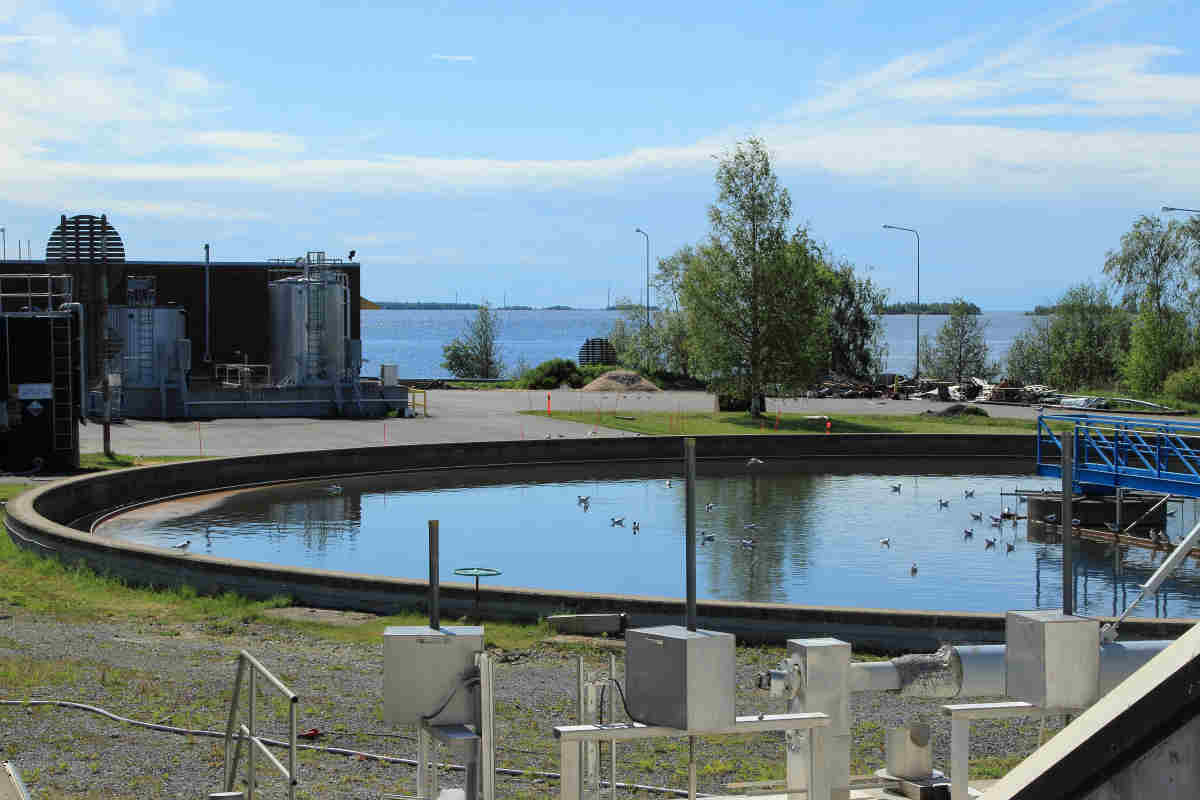In a pioneering move towards environmental sustainability, the Government of India has launched the Green Credit Programme. This initiative is set to revolutionize the way we approach environmental conservation by introducing a competitive, market-based mechanism that incentivizes positive environmental actions. This article delves into the details of the Green Credit Programme, its objectives, and how it aims to foster a sustainable lifestyle for individuals and businesses alike. Moreover, we will explore how Earth5R, a leading sustainability organization, can assist companies in navigating and benefiting from this innovative programme.
What is the Green Credit Programme?
The Green Credit Programme is a national-level initiative designed to leverage a market-based approach to incentivize environmental actions among various stakeholders. It aims to encourage individuals, businesses, and organizations to adopt sustainable practices by awarding them Green Credits for their positive environmental contributions. These credits can be traded on a domestic market platform, making environmental responsibility not only beneficial for the planet but also economically advantageous for participants.
Objectives of the Green Credit Programme
The primary objectives of the Green Credit Programme are:
- Incentivize Environmental Actions: By providing tradable Green Credits for specific environmental activities, the programme aims to motivate stakeholders to engage in actions that benefit the environment.
- Promote the LiFE Movement: The programme supports the ‘Lifestyle for Environment’ (LiFE) initiative, which encourages sustainable lifestyles and drives community and consumer behavioral changes towards environmental friendliness.
- Create Market Opportunities: By establishing a trading platform for Green Credits, the programme facilitates a competitive market that rewards environmental stewardship.
Eligible Activities for Green Credits: Detailed Overview
The Green Credit Programme incentivizes a broad spectrum of environmental activities by awarding Green Credits for specific actions that contribute to ecological sustainability. Here’s a detailed look at the eligible activities and examples of how businesses and individuals can engage in these initiatives.
1. Tree Plantation
Description: Tree plantation involves planting trees to increase green cover, enhance biodiversity, and sequester carbon dioxide. Examples:
- Corporates launching afforestation projects on degraded lands.
- Community groups organizing urban tree-planting drives in parks and public spaces.
- Schools and colleges engaging students in planting native trees within their campuses.
2. Water Management
Description: Activities focused on conserving water resources, implementing water harvesting techniques, and treating and reusing wastewater. Examples:
- Installation of rainwater harvesting systems in residential and commercial buildings.
- Development of community-based water conservation projects, such as building check dams.
- Implementation of greywater recycling systems in industries and households.
3. Sustainable Agriculture
Description: Adoption of agricultural practices that enhance soil health, reduce chemical inputs, and promote biodiversity. Examples:
- Farmers switching to organic farming methods and using compost and biofertilizers.
- Agribusinesses practicing crop rotation and polyculture to improve soil fertility.
- Initiatives promoting agroforestry, where trees and crops are grown together to optimize land use.
4. Waste Management
Description: Enhancing waste management practices through segregation, recycling, composting, and reducing landfill use. Examples:
- Implementation of waste segregation and recycling programs in urban localities.
- Corporates setting up in-house composting units for organic waste.
- Municipal bodies promoting door-to-door collection of segregated waste and setting up recycling centers.
5. Air Pollution Reduction
Description: Measures aimed at reducing air pollution levels through various abatement activities. Examples:
- Industries installing pollution control equipment, such as electrostatic precipitators and scrubbers.
- Urban projects promoting the use of electric vehicles (EVs) and establishing EV charging infrastructure.
- Initiatives encouraging the use of cleaner fuels and renewable energy sources.
6. Mangrove Conservation and Restoration
Description: Efforts to protect and restore mangrove ecosystems, which are vital for coastal protection and biodiversity. Examples:
- Coastal communities engaging in planting and nurturing mangrove saplings.
- NGOs collaborating with local governments to restore degraded mangrove forests.
- Educational programs raising awareness about the importance of mangroves and their conservation.
7. Ecomark Label Development
Description: Encouraging manufacturers to obtain ecomark labels for their products, certifying them as environmentally friendly. Examples:
- Consumer goods companies reformulating products to meet ecomark standards.
- Textile manufacturers using organic and sustainable materials to qualify for ecomark labeling.
- Packaging companies adopting biodegradable materials and sustainable practices.
8. Sustainable Building and Infrastructure
Description: Promoting the construction and retrofitting of buildings and infrastructure using sustainable materials and technologies. Examples:
- Real estate developers constructing green buildings certified by standards such as LEED or IGBC.
- Retrofitting existing buildings with energy-efficient systems, such as solar panels and LED lighting.
- Infrastructure projects incorporating sustainable design principles, like green roofs and rain gardens.
How It Works
The Green Credit Programme, as detailed in the Indian government’s recent gazette notification, is a pioneering initiative aimed at incentivizing and rewarding environmental stewardship. Here’s a comprehensive breakdown of how the programme operates:
Programme Framework
Objective: The primary objective of the Green Credit Programme is to encourage individuals, communities, businesses, and other stakeholders to undertake activities that have a positive environmental impact. These activities are quantified and rewarded with Green Credits, which can be used to offset environmental obligations or traded within a regulated market.
Eligibility: The programme is open to a wide range of participants including:
- Individuals: Citizens who engage in activities such as tree planting, waste management, and water conservation.
- Corporations: Businesses implementing sustainable practices and green initiatives.
- Communities and NGOs: Groups undertaking local environmental projects.
- Government Bodies: Public sector entities that contribute to environmental conservation.
How Credits Are Awarded
Measurement and Verification: Credits are awarded based on the quantifiable impact of eligible activities. The measurement involves assessing factors like carbon sequestration, biodiversity enhancement, water savings, and energy generation.
Verification Process:
- Registration: Participants must register their projects with a recognized accrediting body.
- Monitoring: Ongoing monitoring of project activities and their outcomes.
- Reporting: Detailed reporting of project data and results.
- Certification: Independent verification and certification of project outcomes to ensure compliance with programme standards.
Credit Calculation: The credits are calculated using standardized metrics and methodologies. For instance, the number of Green Credits for tree planting might be based on the species planted, their growth rate, and their carbon sequestration capacity.
Utilization of Green Credits
Compliance: Entities can use Green Credits to meet environmental compliance requirements set by regulatory authorities. For example, industries can use credits to offset their carbon emissions.
Trading: Green Credits can be traded in a regulated market, allowing participants to sell excess credits to other entities needing them for compliance. This creates a financial incentive for environmental conservation activities.
Recognition: Participants receive recognition and certification for their environmental efforts, enhancing their reputation and demonstrating their commitment to sustainability.
How Earth5R Helps Companies with the Green Credit
Earth5R provides comprehensive support to companies participating in the Green Credit Programme, helping them maximize their environmental impact and Green Credit earnings. Our services include:
1. Environmental Impact Projects:
- Helping manage large-scale projects like urban green spaces and water conservation initiatives using state of the art Earth5R App and Dashboard.
- Ensuring these projects are designed to generate substantial Green Credits and contribute to sustainable development.
2. Education and Training:
- Offering specialized training programs for corporate and community stakeholders.
- Educating participants on the benefits and processes of the Green Credit Programme.
3. Earth5R App: Geotagged SaaS Platform and Dashboard:
- Providing a powerful tool for tracking and managing environmental impact projects in real-time.
- Facilitating accurate data collection, reporting, and collaboration among stakeholders.
Employee Volunteering and Engagement Program with Earth5R App
In addition to facilitating participation in the Green Credit Programme, Earth5R also offers an Employee Volunteering and Engagement Program through our advanced, geotagged SaaS platform. This program is designed to inspire and mobilize employees to engage in meaningful environmental activities, enhancing their sense of purpose and fostering a culture of sustainability within the organization.
How the Employee Volunteering and Engagement Program Works
1. Seamless Integration with Corporate Goals:
- Our program aligns with your company’s sustainability and corporate social responsibility (CSR) objectives.
- Employees can participate in initiatives that contribute directly to the company’s environmental impact targets and Green Credit accumulation.
2. User-Friendly Earth5R App:
- Geotagged Activities: Employees can easily find and participate in nearby environmental projects, thanks to the app’s geotagging feature.
- Real-Time Tracking: The app tracks volunteer activities in real-time, providing accurate data on the environmental impact and progress towards goals.
- Engagement Dashboard: A comprehensive dashboard allows managers to monitor participation, track achievements, and recognize employee contributions.
3. Diverse Volunteering Opportunities:
- Urban Green Spaces: Employees can volunteer to plant trees, maintain community gardens, or participate in local reforestation efforts.
- Water Conservation Projects: Opportunities include installing rainwater harvesting systems, cleaning local water bodies, and promoting water-saving techniques.
- Waste Management Initiatives: Activities such as organizing recycling drives, setting up composting systems, and educating the community on waste segregation.
4. Customized Training and Support:
- Workshops and Seminars: Earth5R conducts educational sessions to equip employees with the knowledge and skills needed for effective environmental action.
- Continuous Support: Our team provides ongoing support and guidance to ensure the successful implementation of projects and volunteer activities.
5. Recognition and Rewards:
- Certification: Employees receive certificates for their participation, acknowledging their contributions to environmental sustainability.
- Incentives: Companies can implement reward systems to further motivate employees, such as recognition events, awards, and other incentives.
Benefits of the Employee Volunteering and Engagement Program as part of Green Credits Action
Enhanced Employee Morale and Satisfaction: Engaging in meaningful environmental activities boosts employee morale and job satisfaction, creating a more motivated and committed workforce.
Strengthened Team Collaboration: Volunteering activities foster team spirit and collaboration, as employees work together towards common sustainability goals.
Positive Corporate Image: Demonstrating a commitment to environmental sustainability enhances the company’s reputation among clients, investors, and the public.
Tangible Environmental Impact: Through collective action, employees can make a significant positive impact on the environment, contributing to broader sustainability goals.
5. Compliance and Green Credits: Employee volunteer activities contribute to the company’s Green Credit accumulation, helping meet regulatory requirements and achieve sustainability targets.
The Green Credit Programme represents a significant step forward in India’s journey towards sustainable development. By incentivizing positive environmental actions through a market-based approach, the programme not only promotes a healthier planet but also offers economic benefits to participants. Earth5R is dedicated to supporting businesses and organizations in harnessing the full potential of this innovative initiative. Together, we can drive the transition towards a sustainable and environmentally responsible future.
For more information on how Earth5R can help your organization with the Green Credit Programme, visit our website or contact us directly. Let’s make sustainability a cornerstone of our development strategy and create a greener, more sustainable world for future generations.



